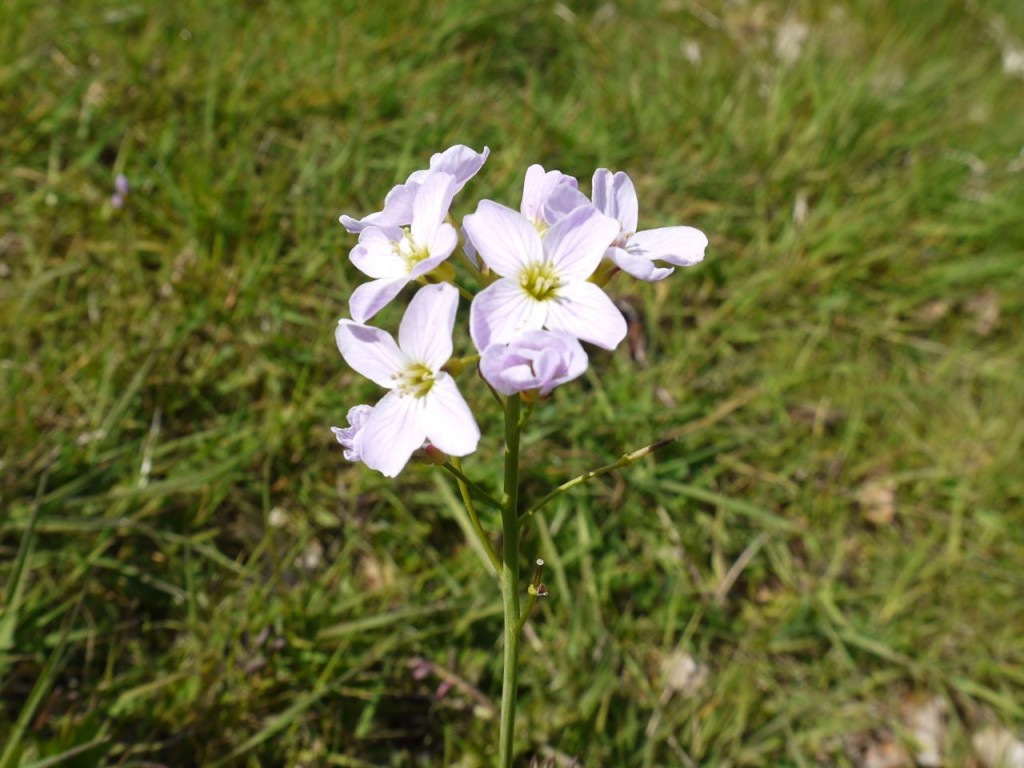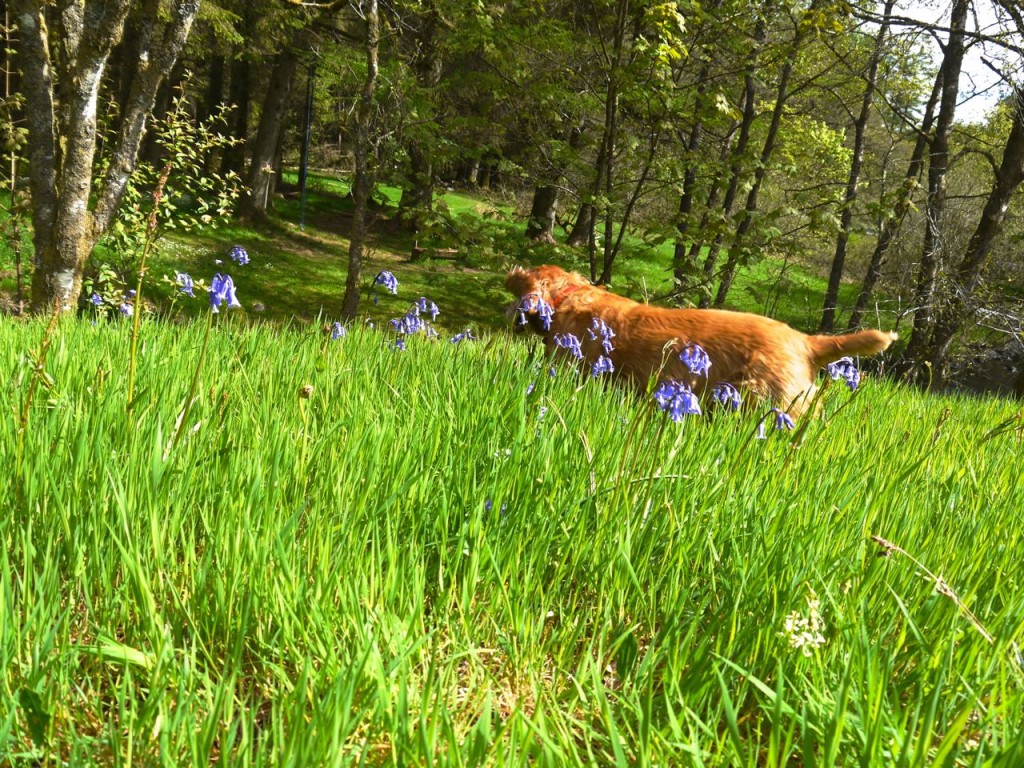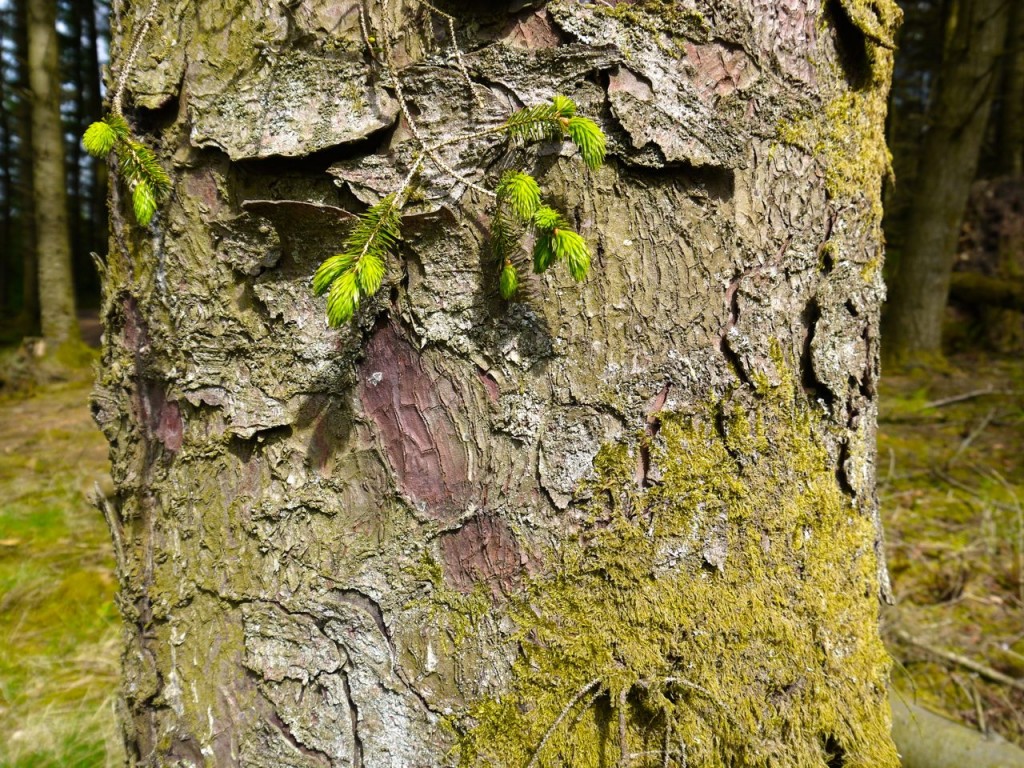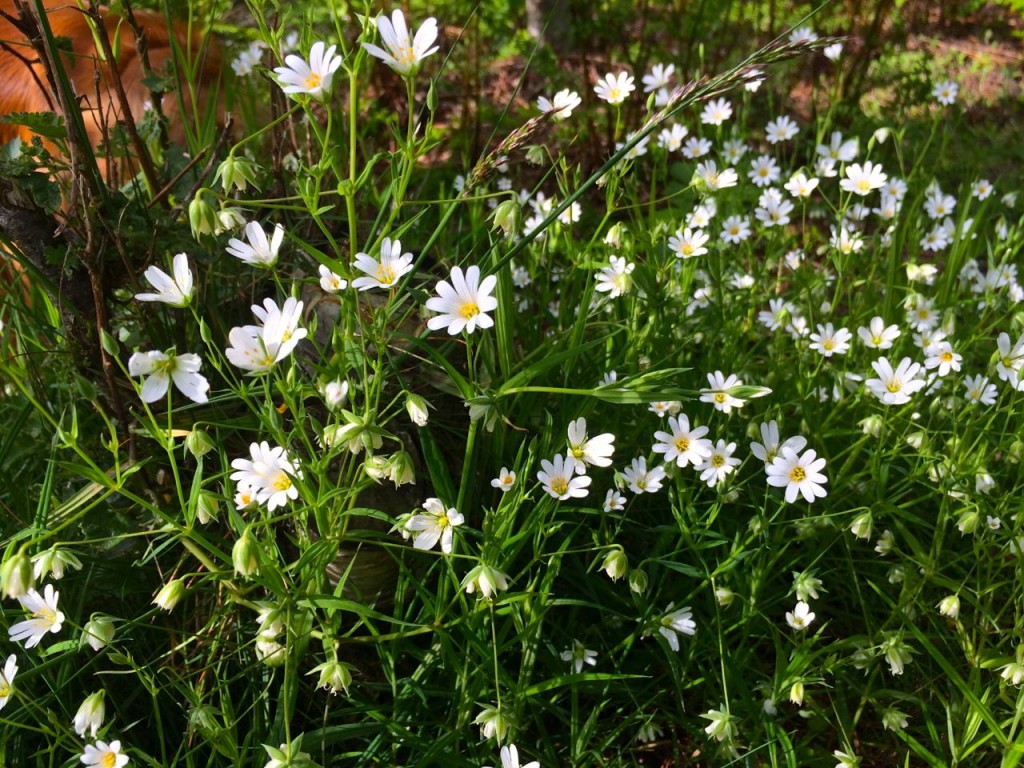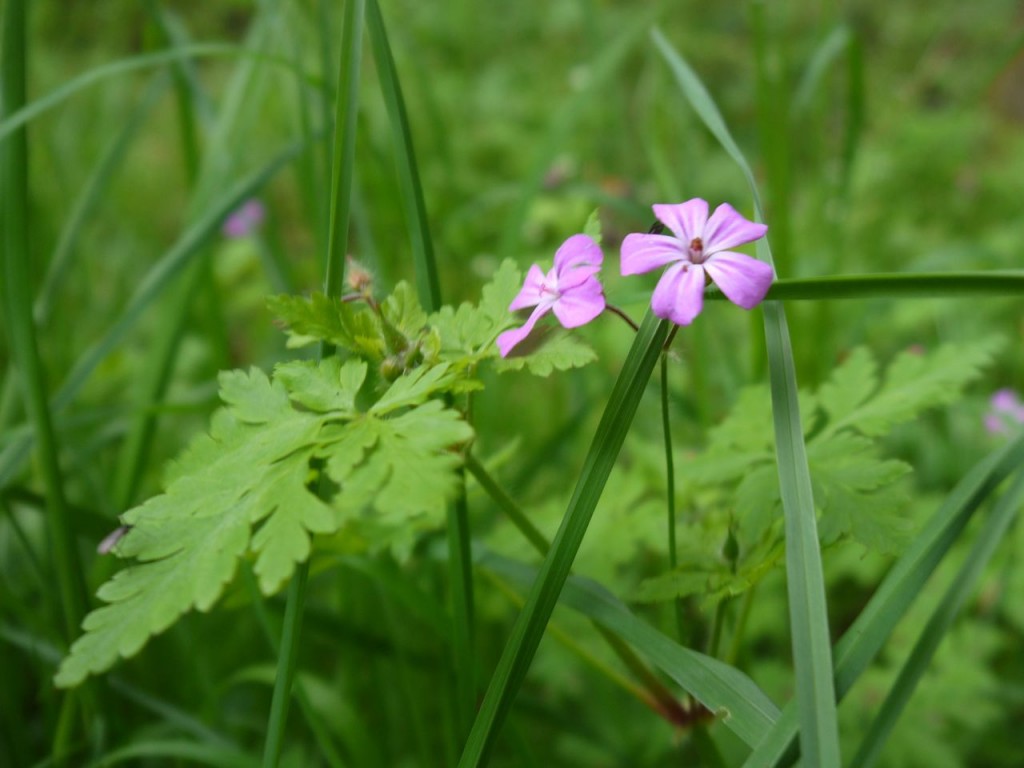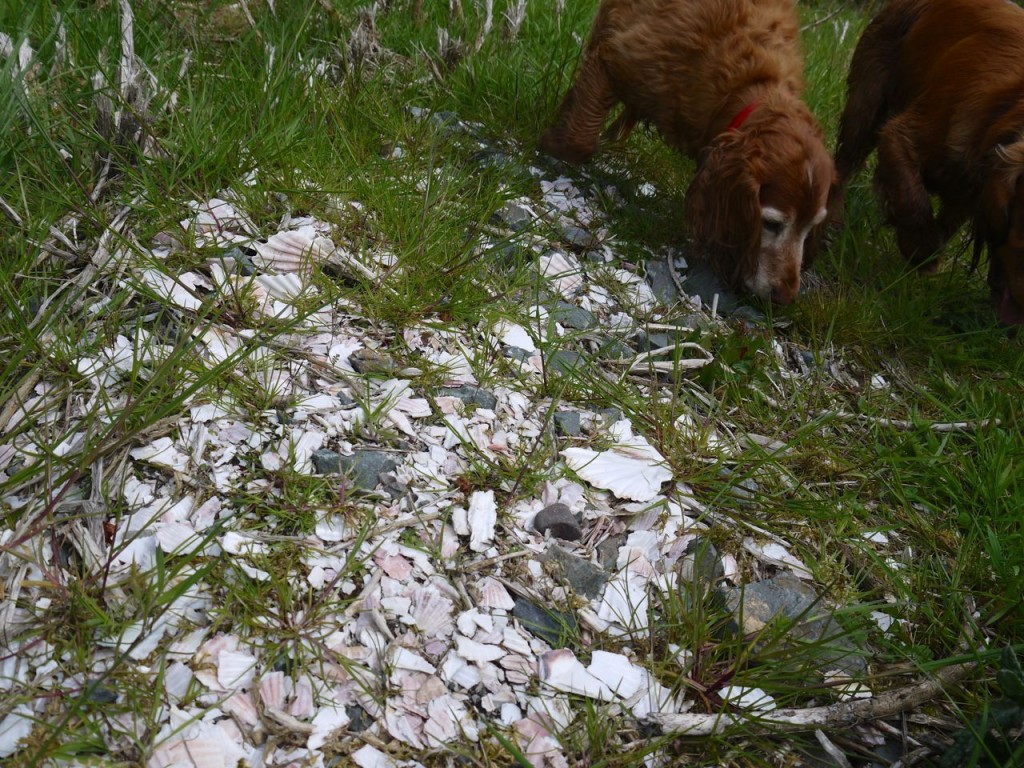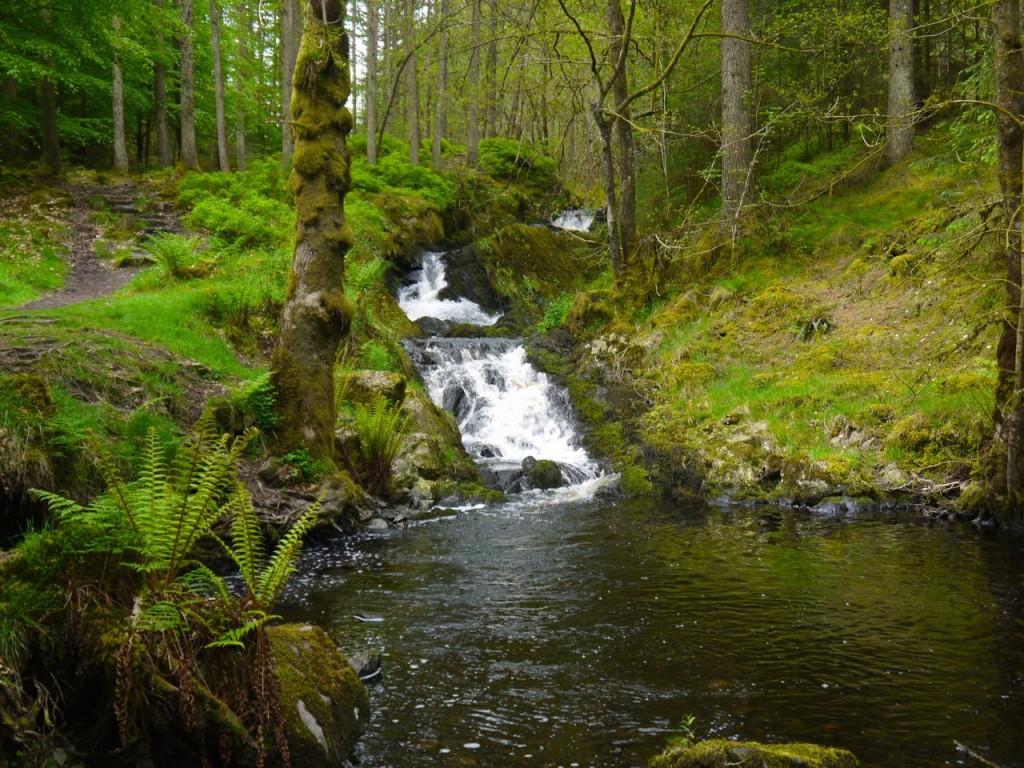4.1 miles 2h 5m
A stroll in Kenick Woods, and along Kenick burn
I stepped from the car, breathed in the forest air, let the spaniels loose and went to take a closer look at the white flowers scattered on the grass. They were actually pale pink, and having seen them on a walk a few days earlier, I recognised them as cuckooflowers, which are also known as Lady’s Smocks. The name cuckooflower has an obvious origin since the flowers appear when the cuckoos are calling, but no matter how I looked at the flower I couldn’t see a lady’s smock.
My mistake had been to look for smocks in the flowers themselves. I needed a different, broader perspective to see the smocks.
Littering far the fields of May
Lady-smocks a-bleaching lay
And like a skylit water stood
The bluebells in the azured wood.
(A E Houseman)
When I was a lad, maidens would have gotten their summer smocks from Chelsea Girl, but in Shakespeare’s time, “maidens bleach their summer smocks” leaving linen exposed on the grass to whiten. I think they’ll be Lady’s Smocks for me now.
When daisies pied and violets blue,
And lady-smocks all silver-white,
And cuckoo-buds of yellow hue,
Do paint the meadows with delight.
(A little more Shakespeare)
There were daisies, violets, dandelions and buttercups too, and having considered the cuckooflower some I thought these deserved some attention too.
The daisy was named the day’s eye, dæges-eage in Old English, and in Welsh, llygad y dydd, eye of the day. The flowers open at dawn, track the sun through the day then close at dusk. The daisy has many uses. It is good for making daisy chains, and when you can put your foot on seven daisies it is a sign that Spring has arrived. And if you can persevere in plucking the petals from a flower you may find out if he/she loves you.
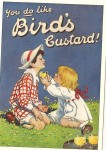 The cuckoo-buds in the poem are thought to have been buttercups, though the name hasn’t survived the journey to the present day. Buttercup is a relatively modern name, first occurring in the eighteenth century and probably a combination of the older names gold-cup and butter flower. Buttercups were believed, incorrectly, to give butter its yellow colour, and are of course used by children to test if their friends like butter.
The cuckoo-buds in the poem are thought to have been buttercups, though the name hasn’t survived the journey to the present day. Buttercup is a relatively modern name, first occurring in the eighteenth century and probably a combination of the older names gold-cup and butter flower. Buttercups were believed, incorrectly, to give butter its yellow colour, and are of course used by children to test if their friends like butter.
The lions teeth, the dandelions, had their seed heads ready to tell the time. As children we have all I am sure blown the seeds from a seed head to find the hour, though as adults we wouldn’t dream of blowing dandelions to find the time. So why would our forebears use Tell-time as a name for the plant? In folklore “The dandelion is called the rustic oracle; its flowers always open about 5 am and shut at 8 pm, serving the shepherd for a clock.” Dandelion seed heads are another option for the “he loves/he loves me not” test, but there is another interpretation: if you can blow all the seeds off with one blow, then you are loved with a passionate love. If some seeds remain, then your lover has reservations about the relationship. If a lot of the seeds still remain on the globe, then you are not loved at all, or very little.
Dandelion is certainly a more pleasant name than the older English, piss-a-bed, or the modern French pissenlit but these names may have a degree of truth as shown in The Diuretic Effect in Human Subjects of an Extract of Taraxacum officiale Folium over a Single Day.
There is a small picnic area across the a gentle bubbling brook, the Kenick Burn, and a footbridge gets you there with dry feet. The name Kenick is said to have the same origin as Cumnock, cam cnoc, a crooked hill. I like to look at features that are the basis of names but I couldn’t see Kenick Hill for forest so it’s difficult to say whether this is a likely description.
Turning from the open grass to ground in the shade of the trees, the daises and buttercups gave way to the blue and white of Bluebells and Stitchwort.
I don’t think there’s much mystery about the origin of the bluebell’s name, though the gaelic name, bròg na chutais, cuckoo’s shoes, relates more to its timing than appearance. Bluebells apparently spread quite slowly and so are a sign of ancient woodland sites. According to the national trust, 50% of the world’s bluebells are in the UK. Spanish Bluebells have escaped from gardens and hybridising with native plants, these hybrids have a paler colour and often lose the native bluebell’s characteristic scent. More information on these is available at Plantlife.
The bluebell is traditionally associated with constancy which may be why brides would wear something blue. It was also believed that someone wearing a bluebell was compelled to tell the truth. The flower had its dangers though. Ringing the bells summoned fairies and there was a risk that anyone walking through bluebells would fall under their enchantments.
The Bluebell is the sweetest flower
That waves in summer air:
Its blossoms have the mightiest power
To soothe my spirit’s care.
(Emily Bronte)
The greater stitchwort looks like a white bell early in the day then opens up to a star shape in the sunlight. Picking it is said to cause thunderstorms. The wort part of its name is easy, originating as the Old English wyrt, a plant. Its full name is often to said to relate to its use in relieving stitches, but that doesn’t ring true to me. Other names such as adder’s meat and snake flower make me wonder if the “stitch” is a sting or stab and the flower was one to avoid if it hid snakes or were a folk remedy for snake bites.
There was plenty of wood sorrel about, though I could only find a few flowers. I had read that wood sorrel tasted like bread and cheese or egg and cheese, both of these being names for it. In order to add taste to the walk’s sensations I chewed some wood sorrel leaves and had a surprise. I had a similar experience as a boy, when on a farm I was given a drink of milk. The unexpected warmth of the newly produced milk was a shock. This time the shock was the astringent and powerful taste, not of egg and cheese, but of apple skin. Mrs Drow ‘n’ Smirr is not too happy that I chose to stimulate my taste senses this way.
Part of the walk follows the Kenick Burn and passes by a small waterfall. The dogs, well Sweep mainly, had plenty of opportunity for paddling. Eddie is more of a mud-lover.
After a couple of hours wandering about we were heading back to the car when the background warbling birdsong of chaffinch, chiffchaff, and willow warblers was cut through by a shriek, soon followed by a Red Kite gliding in to view.

